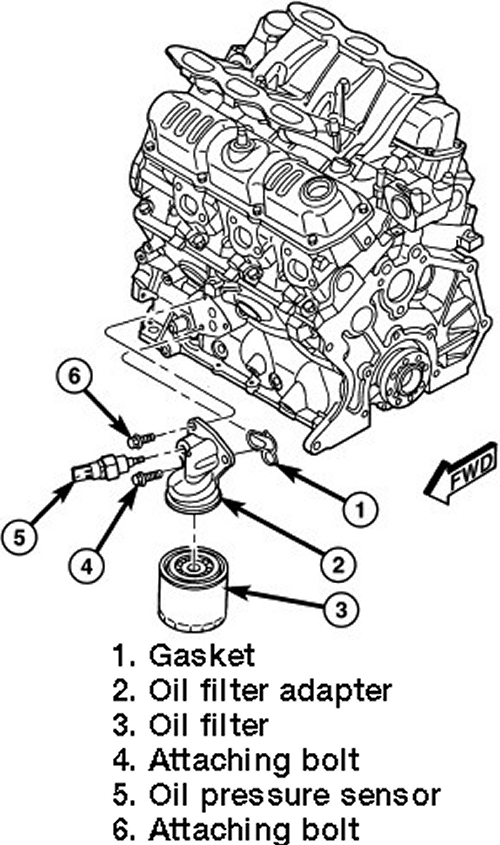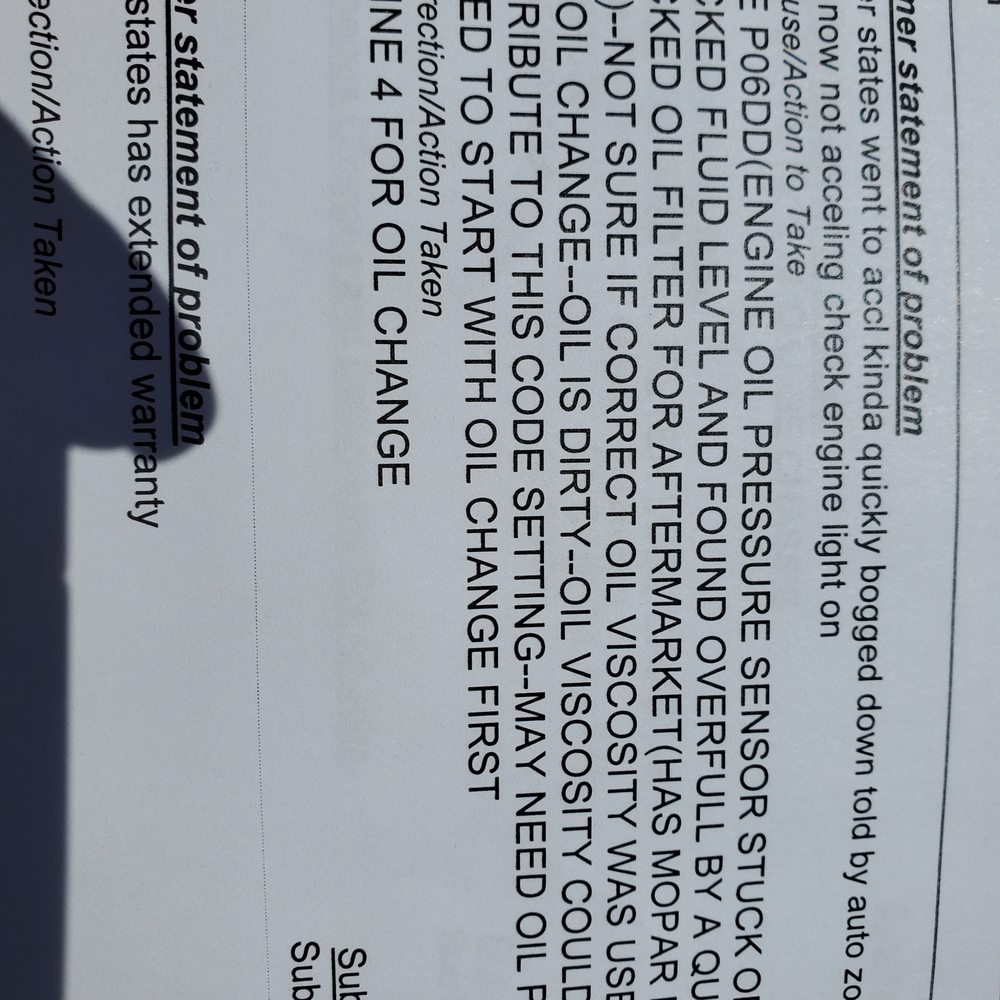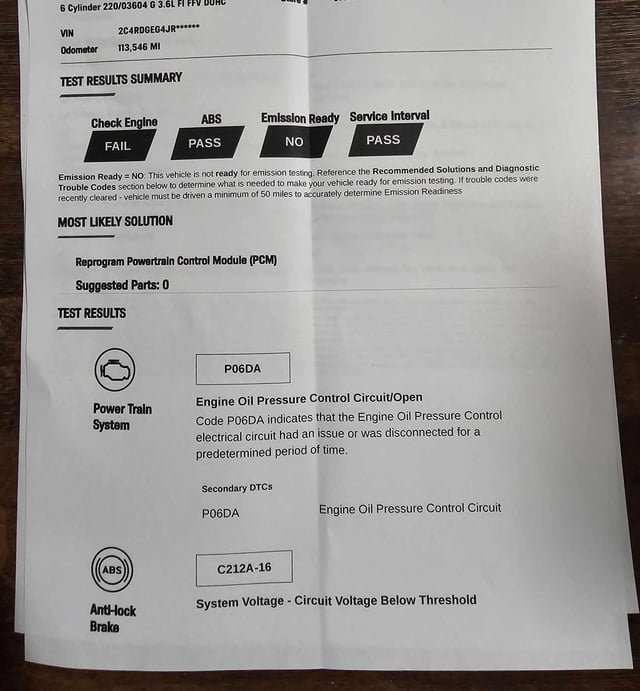The engine oil pressure sensor is typically located near the oil filter or on the engine block. It is crucial for monitoring oil pressure to protect the engine from damage.
Ensuring the proper functioning of the engine oil pressure sensor is vital for the overall health and performance of the vehicle. By detecting changes in oil pressure, this sensor helps prevent engine damage and ensures smooth operation. Regular inspection and maintenance of the sensor can help avoid potential issues and extend the life of the engine.
Understanding the location of the sensor is key for quick troubleshooting and replacement if needed. Let’s delve deeper into the significance of the engine oil pressure sensor and its role in maintaining engine efficiency and longevity.
Introduction To Engine Oil Pressure Sensors
An engine oil pressure sensor is a vital component in a vehicle’s engine system, responsible for monitoring the oil pressure and ensuring that it remains within safe operating levels. Understanding the importance and basic functions of oil pressure sensors is crucial for maintaining the health and performance of an engine.
Importance Of Oil Pressure
Maintaining proper oil pressure is essential for the longevity of an engine. Low oil pressure can lead to increased friction and heat, potentially causing premature wear on engine components. Conversely, high oil pressure can result in damage to seals and gaskets. Therefore, monitoring and regulating oil pressure is critical to prevent costly engine damage.
Basic Functions
The primary function of an engine oil pressure sensor is to monitor the oil pressure within the engine. When the sensor detects a deviation from the ideal pressure range, it sends a signal to the vehicle’s engine control module (ECM). The ECM then utilizes this information to trigger a warning light on the dashboard or make automatic adjustments to maintain optimal oil pressure.

Credit: www.autozone.com
Key Signs Of A Faulty Oil Pressure Sensor
Oil pressure is crucial for ensuring the longevity of your car’s engine. The oil pressure sensor plays an important role in monitoring the oil pressure and alerting the driver when there is an issue. Here are some key signs of a faulty oil pressure sensor that you should keep an eye out for.
Warning Lights On Dashboard
One of the most obvious signs of a faulty oil pressure sensor is the warning light on the dashboard. If the oil pressure sensor detects low oil pressure, it will send a signal to the car’s computer, which will then illuminate the warning light on the dashboard. This is a clear indication that you need to check your oil levels and get your car inspected by a professional mechanic.
Erratic Oil Pressure Readings
If your oil pressure sensor is faulty, you may notice erratic oil pressure readings on your car’s gauge. The gauge may show that the oil pressure is too high or too low, even when the engine is running smoothly. This can be dangerous, as it may cause you to overfill or underfill your engine oil, which can lead to engine damage over time.
Unusual Engine Noises
In some cases, a faulty oil pressure sensor may cause your engine to make unusual noises. If you hear ticking or knocking sounds coming from your engine, it could be a sign that your oil pressure sensor is not working correctly. These noises may be caused by the lack of oil pressure, which can cause the engine components to rub against each other, resulting in damage over time.
If you notice any of these signs, it’s important to get your car inspected by a professional mechanic as soon as possible. Ignoring a faulty oil pressure sensor can lead to serious engine damage and costly repairs down the line. Regular maintenance and inspection of your car’s oil pressure sensor can help ensure the longevity of your engine and keep you safe on the road.
Typical Locations Of Oil Pressure Sensors
In order to monitor the oil pressure in an engine, oil pressure sensors are strategically placed in various locations. These sensors play a crucial role in ensuring the engine’s health and performance. Let’s take a closer look at the typical locations where oil pressure sensors can be found.
Near The Oil Filter
One common location for an oil pressure sensor is near the oil filter. This placement allows the sensor to accurately measure the pressure of the oil as it passes through the filter. By being in close proximity to the oil filter, the sensor can provide real-time data about the oil pressure, ensuring that the engine is properly lubricated.
Engine Block Placement
Another common placement for an oil pressure sensor is on the engine block itself. This location allows the sensor to directly monitor the oil pressure within the engine. By being mounted on the engine block, the sensor can detect any fluctuations or abnormalities in the oil pressure, providing vital information to the engine control unit (ECU) to make necessary adjustments.
It’s important to note that the exact location of the oil pressure sensor can vary depending on the make and model of the vehicle. However, the near the oil filter and engine block placements are commonly seen in many vehicles.
By having oil pressure sensors in these strategic locations, the engine’s oil pressure can be accurately monitored, ensuring optimal performance and longevity. Regularly checking and maintaining the oil pressure sensor is crucial to prevent any potential issues and keep the engine running smoothly.
Credit: www.civicx.com
Step-by-step Guide To Finding The Oil Pressure Sensor
When it comes to maintaining your vehicle’s engine, the oil pressure sensor plays a crucial role in ensuring optimal performance. Located within the engine, this sensor measures the oil pressure and sends the data to the engine control unit (ECU). If you suspect a faulty sensor or want to check its condition, here is a step-by-step guide to help you locate it.
Tools Needed
- Socket wrench set
- Oil filter wrench
- Flashlight
Safety Precautions
Prior to locating the oil pressure sensor, it’s important to take necessary safety precautions. Follow these guidelines to ensure a safe and hassle-free inspection:
- Ensure the engine is turned off and has cooled down completely.
- Park your vehicle on a level surface and engage the parking brake.
- Wear protective gloves and safety goggles to prevent any injuries or contact with hot engine parts.
Once you have gathered the required tools and taken the necessary safety precautions, you can proceed with locating the oil pressure sensor. Here are the steps to follow:
- Open the hood of your vehicle and secure it in place using the hood prop rod.
- Locate the engine oil dipstick, usually marked with a bright-colored handle or labeled “Engine Oil” for easy identification.
- Remove the dipstick from its tube and set it aside in a clean and safe place.
- Using a flashlight, scan the engine area for the oil pressure sensor. It is typically located near the oil filter housing or on the engine block.
- Identify the sensor, which is a small cylindrical or rectangular component with an electrical connector attached to it.
- If needed, refer to your vehicle’s owner manual or consult an online resource specific to your make and model for additional guidance.
With the oil pressure sensor located, you can now inspect it for any signs of damage or wear. If you suspect a faulty sensor, it is recommended to consult a professional mechanic for further diagnosis and potential replacement.
Remember to always exercise caution when working on your vehicle’s engine and follow proper safety procedures. Regular maintenance and inspection of the oil pressure sensor will help ensure the longevity and performance of your vehicle’s engine.
Common Challenges In Locating The Sensor
Engine Variations
Engines vary in design and layout, which can make locating the engine oil pressure sensor a challenging task. Different engine models may have the sensor placed in varied locations, depending on the manufacturer’s specifications. This variation can make it difficult for mechanics and vehicle owners to pinpoint the exact position of the sensor without the appropriate guidance or resources.
Aftermarket Modifications
Aftermarket modifications, such as engine swaps or custom installations, can further complicate the task of locating the engine oil pressure sensor. When a vehicle undergoes aftermarket alterations, the original sensor placement may be altered or relocated to accommodate the new engine setup. This can create a puzzle for individuals attempting to identify the sensor’s location, as it may deviate from the standard configuration.
Diy Tips For Accessing The Oil Pressure Sensor
Locating the engine oil pressure sensor is essential for DIY enthusiasts. Look near the oil filter or on the engine block for easy access. Use online resources for specific guidance on your vehicle model.
Removing Obstacles
Ensure proper access to the sensor by clearing any obstacles.
Using The Right Tools
Use the correct tools like a wrench or socket set.
When To Seek Professional Help
If you’re experiencing issues with your engine oil pressure sensor location, it’s important to seek professional help. Professional mechanics can accurately diagnose and address any problems related to the sensor, ensuring the proper functioning of your vehicle. Regular maintenance checks are crucial to prevent potential issues with the engine oil pressure sensor.
If you notice fluctuations in oil pressure readings, it’s wise to consult a mechanic.
Complex Engine Layouts
In vehicles with complex engine layouts, locating the sensor can be challenging.
Sensor Calibration
Ensure the sensor is calibrated correctly for accurate oil pressure readings.

Credit: www.youtube.com
Maintenance Tips To Prolong Sensor Life
Proper maintenance is vital for the longevity of your engine oil pressure sensor. Here are essential tips to extend its lifespan:
Regular Check-ups
- Inspect sensor during oil changes.
- Look for signs of wear or leaks.
- Ensure connections are secure.
Avoiding Common Pitfalls
- Avoid harsh driving habits.
- Use recommended oil viscosity.
- Keep sensor area clean from debris.
Read More: Will Low Oil Pressure Halt Your Engine Start? Find Out!
Frequently Asked Questions
Where Is The Engine Oil Pressure Sensor Located?
The engine oil pressure sensor is typically located near the oil filter housing or on the engine block. It may also be found on the cylinder head. Refer to your vehicle’s service manual for the exact location.
What Are The Symptoms Of A Faulty Oil Pressure Sensor?
Common symptoms of a faulty oil pressure sensor include illuminated oil pressure warning light, low oil pressure readings, engine knocking or tapping noises, and oil leaks. It’s important to address these symptoms promptly to avoid potential engine damage.
How Do I Test The Engine Oil Pressure Sensor?
To test the engine oil pressure sensor, use a multimeter to check for continuity and resistance. You can also connect a manual oil pressure gauge to verify the sensor’s readings. If you’re unsure, consult a professional mechanic for accurate diagnosis and repair.
Conclusion
The engine oil pressure sensor is a crucial component that helps ensure your vehicle’s engine runs smoothly. It monitors oil pressure and sends signals to the engine control unit, alerting the driver of any potential issues. Locating the sensor may seem daunting, but it’s essential to keep it functioning correctly.
Regular maintenance and inspections can help prevent any costly repairs. By understanding its location and function, you can keep your vehicle running at its best.


